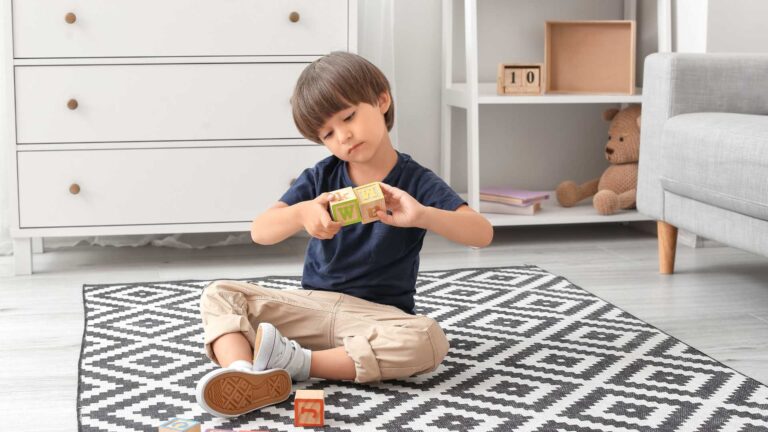According to the latest statistics, one in 36 children under eight will be diagnosed with autism spectrum disorder (ASD). Chances are, even if you are the parent of a neurotypical child, you or your children have friends or neighbors on the spectrum.
Autism presents a unique set of challenges that can impact various aspects of a family’s life. As a family member or community member, offering support can make a significant difference in helping parents navigate this journey. It can be a gratifying experience to provide aid and make families navigating ASD feel welcome.
At ABA Centers of America, we are proud members of the autism awareness and advocacy community. Autism used to be seldom understood and rarely discussed. We now recognize that neurodivergent kids and their parents deserve dignity, appreciation, and solidarity. This article will be about the best ways to offer a helping hand. We will explore practical ways to support parents of children with autism, fostering an environment of understanding, empathy, and collaboration.
How to Support Parents of Children with Autism
1. Understanding Autism Spectrum Disorder
Before delving into support strategies, it’s important to understand autism spectrum disorder. Autism is a neurodevelopmental condition that affects communication, sensory processing, social interaction, and everyday behaviors. It’s essential to recognize that every child with autism is unique, with individual strengths and challenges. While some kids will be nonverbal or say very few words, others might want to tell you about their particular interests. Some will struggle with loud sounds, and others might not like hugs as a greeting. When it comes to autism, there is no one-size-fits-all.
By recognizing the diverse nature of the disorder, you can better appreciate the experiences of parents and their children. One of the most valuable ways to support parents of children with autism is to educate yourself about the disorder. This knowledge helps you better understand their challenges and enables you to engage in meaningful conversations and offer informed support.
Various resources, including books, articles, and online courses, provide insights into autism and its impact on families. ABA Center of America’s blog regularly offers the best information on the challenges facing the ASD community and the fantastic feats ASD kids can accomplish.
2. Practice Empathetic Listening
Listening is an invaluable tool when offering support. Allow parents to share their experiences, fears, and successes without judgment or advice unless they ask for it. Stigmatizing autism is the worst thing you can do when someone approaches you for support. Parents of children with autism may face situations that seem unfamiliar or challenging. It’s crucial to face these situations with patience and an open mind. Sometimes, all a parent needs is a compassionate ear to confide in. Acknowledge their feelings, and let them know you’re there for them, ready to listen whenever they need to talk.
3. Include the Child
One of the best ways to support parents of children with autism is to make them feel welcome. Community is difficult to come by, particularly when you worry that your child will not be appreciated by most. Some parents of children on the spectrum might be shy about imposing, which can make them feel isolated. Try to include them in your plans! If you are throwing a party or spending time with families, invite an ASD family.
You can also engage in activities that cater to the child’s interests and strengths and adapt your communication style to meet their needs. For example, many movie theaters host autism-friendly screenings with dimmed lights and quieter noise. You can organize a family outing that includes a neurodivergent child, and other kids can still enjoy the movie just the same.
This approach supports the child’s development and shows parents you value their child’s uniqueness.
4. Respect Sensory Needs
A unique and hard-to-understand aspect of autism spectrum disorder is their different sensory needs. Loud sounds, lights, crowds, strangers, textures, and tastes can all be challenging for kids diagnosed with ASD. Although many won’t struggle with all of the above-mentioned sensory experiences, a hallmark of ASD is different information processing.
When spending time with the child and their family, be mindful of sensory triggers and preferences. Adjust your environment to minimize overwhelming stimuli, and ask the parents about any specific sensory considerations to ensure everyone feels comfortable and respected. For example, if you have a child with ASD who is a picky eater, stock their favorite snacks. Below are some tips for respecting sensory needs:
- Mind the Environment: When spending time with the child, create a calm and quiet environment. Reduce background noise and minimize bright, flickering, or overwhelming lights. Choose a quiet and less crowded space for activities whenever possible.
- Offer Choices: Allow the child to control their sensory experiences when it makes sense. Offer choices related to activities, toys, or environments so that they can select the most comfortable.
- Respect Personal Space: Some children with ASD may have a heightened awareness of personal space. Respect their comfort zones and avoid invading their personal space without permission. Give them physical space and allow them to approach you when they feel ready.
- Use Gentle Touch: Some children with ASD may have aversions to certain types of touch. Always ask for their permission before initiating physical contact, like hugs or high-fives. Use a gentle touch and observe their response to ensure they are comfortable.
- Encourage Parallel Play: If scheduling a playdate between your child and a kid with ASD, be mindful of how kids on the spectrum play. Many don’t understand the social context of sharing and taking turns. If this is the case, allow kids to play side by side rather than directly together on the same game. This method can make play a rewarding experience for all parties involved.
- Provide Sensory Tools: Sensory tools, such as fidget toys, weighted blankets, or sensory-friendly items, can help children with ASD regulate their sensory experiences. Check with parents or caregivers about any tools the child uses and ask if they would like you to incorporate them during interactions.
- Allow Breaks: Pay attention to signs of sensory overload, such as increased agitation or withdrawal. Offer the child the option to take breaks when needed. A good strategy is to set aside quiet space and clarify that if they feel overwhelmed, they can go there and relax with no problems.
- Seek Permission: Always seek permission before introducing new sensory experiences. Whether it’s a unique texture, scent, or activity, ask the child if they are comfortable trying it. Respect their choice if they decline.
- Offer Positive Reinforcement: When a child engages with a sensory experience or environment comfortably, offer positive reinforcement, such as a compliment or a treat. This technique encourages them to explore and engage while feeling supported.
5. Celebrate Achievements
Every milestone achieved by a child with autism is a significant victory. Celebrate these achievements with the parents. Whether it’s a new word spoken, a successful social interaction, or a breakthrough in therapy, acknowledging these moments reinforces the parents’ dedication and encourages them to keep moving forward.
Remember that your support doesn’t need to be grand; even small gestures of kindness and understanding can go a long way in making the challenging road of parenting a child with autism a bit smoother. Your willingness to be present and supportive can make a difference, helping these parents navigate their path with confidence, resilience, and hope.
ABA Centers of America Supports Parents
Parents of children with autism often find solace in connecting with others facing similar challenges. Help them find local support groups where they can share experiences, exchange advice, and build a sense of community. If you are or know an ASD family, tell them about ABA Centers of America.
Here, we offer Applied Behavior Analysis (ABA), the best therapy to help kids on the spectrum learn new skills and grow toward happiness, independence, and success. Many of the techniques discussed in this article are directly from ABA, such as encouraging play through positive reinforcement while respecting a child’s comfort and preferences. Additionally, we are proud members of the autism community and organize frequent events, like field trips, screenings, and play days, where families can join the most rapidly expanding autism community in the United States.
Call 844-923-4222 or visit our website to learn more about how we support parents of children with autism.







